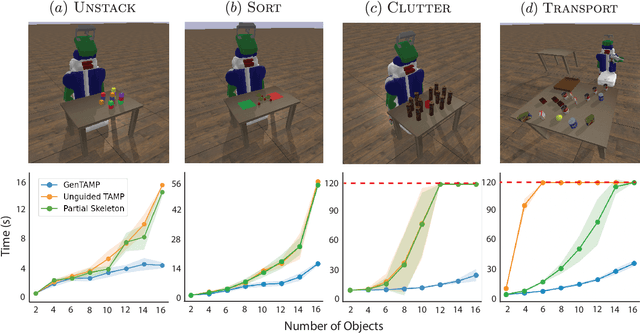Discovering State and Action Abstractions for Generalized Task and Motion Planning
Paper and Code
Sep 23, 2021



Generalized planning accelerates classical planning by finding an algorithm-like policy that solves multiple instances of a task. A generalized plan can be learned from a few training examples and applied to an entire domain of problems. Generalized planning approaches perform well in discrete AI planning problems that involve large numbers of objects and extended action sequences to achieve the goal. In this paper, we propose an algorithm for learning features, abstractions, and generalized plans for continuous robotic task and motion planning (TAMP) and examine the unique difficulties that arise when forced to consider geometric and physical constraints as a part of the generalized plan. Additionally, we show that these simple generalized plans learned from only a handful of examples can be used to improve the search efficiency of TAMP solvers.
 Add to Chrome
Add to Chrome Add to Firefox
Add to Firefox Add to Edge
Add to Edge